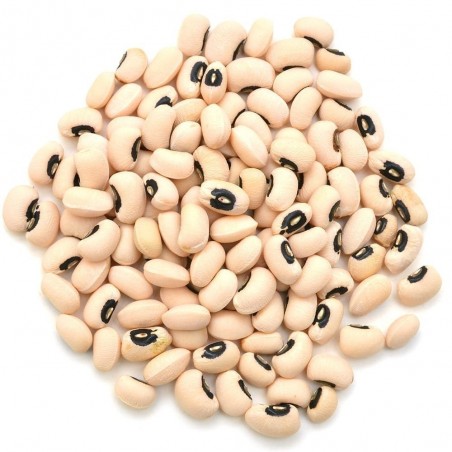
Common Ivy, English Ivy, European Ivy Seeds (Hedera helix)
Common Ivy, English Ivy, European Ivy Seeds (Hedera helix)
Price for Package of 10 seeds.
Hedera helix (common ivy, English ivy, European ivy, or just ivy) is a species of flowering plant in the family Araliaceae, native to most of Europe and western Asia. A rampant, clinging evergreen vine, it is a
Common Ivy, English Ivy, European Ivy Seeds (Hedera helix)
Price for Package of 10 seeds.
Hedera helix (common ivy, English ivy, European ivy, or just ivy) is a species of flowering plant in the family Araliaceae, native to most of Europe and western Asia. A rampant, clinging evergreen vine, it is a familiar sight in gardens, waste spaces, on house walls, tree trunks and in wild areas across its native habitat.
It is labeled as an invasive species in a number of areas where it has been introduced, particularly Washington, where it is labeled as a noxious weed, many parts of the eastern United States, and Oregon, where its sale or cultivation are banned.
Hedera helix is an evergreen climbing plant, growing to 20–30 m (66–98 ft) high where suitable surfaces (trees, cliffs, walls) are available, and also growing as groundcover where no vertical surfaces occur. It climbs by means of aerial rootlets with matted pads which cling strongly to the substrate. The ability to climb on surfaces varies with the plants variety and other factors: Hedera helix prefers non-reflective, darker and rough surfaces with near-neutral pH. It generally thrives in a wide range of soil pH with 6.5 being ideal, prefers moist, shady locations and avoids exposure to direct sunlight, the latter promoting drying out in winter.
The leaves are alternate, 50–100 mm (2–4 in) long, with a 15–20 mm (0.6–0.8 in) petiole; they are of two types, with palmately five-lobed juvenile leaves on creeping and climbing stems, and unlobed cordate adult leaves on fertile flowering stems exposed to full sun, usually high in the crowns of trees or the top of rock faces.
The flowers are produced from late summer until late autumn, individually small, in 3-to-5 cm-diameter (1.2-to-2.0 in) umbels, greenish-yellow, and very rich in nectar, an important late autumn food source for bees and other insects.
The fruit are purple-black to orange-yellow berries 6–8 mm (0.2–0.3 in) in diameter, ripening in late winter,[5] and are an important food for many birds, though somewhat poisonous to humans.
One to five seeds are in each berry, which are dispersed after being eaten by birds.
The three subspecies are:
H. h. helix
central, northern and western Europe, plants without rhizomes, purple-black ripe fruit
H. h. poetarum Nyman (syn. Hedera chrysocarpa Walsh)
southeast Europe and southwest Asia (Italy, Balkans, Turkey), plants without rhizomes, orange-yellow ripe fruit
H. h. rhizomatifera McAllister
southeast Spain, plants rhizomatous, purple-black ripe fruit
The closely related species Hedera canariensis and Hedera hibernica are also often treated as subspecies of H. helix,[8][10] though they differ in chromosome number so do not hybridise readily.[7] H. helix can be best distinguished by the shape and colour of its leaf trichomes, usually smaller and slightly more deeply lobed leaves and somewhat less vigorous growth, though identification is often not easy.
Range
It ranges from Ireland northeast to southern Scandinavia, south to Portugal, and east to Ukraine and Iran and northern Turkey.
The northern and eastern limits are at about the −2 °C (28 °F) winter isotherm, while to the west and southwest, it is replaced by other species of ivy. Hedera helix itself is much more winter-hardy and survives temperatures of −23.3 °C (−9.9 °F) (USDA Zone 6a) and above.
Cultivation and uses
The ivy is widely cultivated as an ornamental plant. Within its native range, the species is greatly valued for attracting wildlife. The flowers are visited by over 70 species of nectar-feeding insects, and the berries eaten by at least 16 species of birds. The foliage provides dense evergreen shelter, and is also browsed by deer.
In Europe, it is frequently planted to cover walls and the government recommends growing it on buildings for its ability to cool the interior in summer, while providing insulation in winter, as well as protecting the covered building from soil moisture, temperature fluctuations and direct exposure to heavy weather. Further uses include weed suppression in plantings, beautifying unsightly facades and providing additional green by growing on tree trunks.
Over 30 cultivars have been selected for such traits as yellow, white, variegated (e.g. 'Glacier'), and/or deeply lobed leaves (e.g. 'Sagittifolia'), purple stems, and slow, dwarfed growth.
Ethnomedical uses
Ivy extracts are part of current cough medicines. In the past, the leaves and berries were taken orally as an expectorant to treat cough and bronchitis. In 1597, the British herbalist John Gerard recommended water infused with ivy leaves as a wash for sore or watering eyes.[30] The leaves can cause severe contact dermatitis in some people. People who have this allergy (strictly a type IV hypersensitivity) are also likely to react to carrots and other members of the Apiaceae as they contain the same allergen, falcarinol.
Use as building facade green
As with any self-climbing facade green, some care is required to make best use of the positive effects: Ivy covering the walls of an old building is a familiar and often attractive sight. It has insulating as well as weather protection benefits, dries the soil and prevents wet walls, but can be problematic if not managed correctly.
Ivy, and especially European ivy (H. helix) grows vigorously and clings by means of fibrous roots, which develop along the entire length of the stems. These are difficult to remove, leaving an unsightly "footprint" on walls, and possibly resulting in expensive resurfacing work. Additionally, ivy can quickly invade gutters and roofspaces, lifting tiles and causing blockages. It also harbors mice and other unwelcome creatures. The plants have to be cut off at the base, and the stumps dug out or killed to prevent regrowth.
Therefore, if a green facade is desired, this decision has to be made consciously, since later removal would be tedious.
| HEIRLOOM ? | Yes |
|---|---|
| Organic Seeds ? | Organic Seeds |
| Perennial ? | Perennial plant : Yes |
| Semințe culese manual? | Semințe culese manual |
| Resistant to cold and frost ? | Cold resistant: to −30 °C |
| Manufacturer ? | Manufacturer: Seeds Gallery |
| Medicinal Plant ? | Medicinal Plant: Yes |


Aprecierea ta pentru recenzie nu a putut fi trimisa
Reclama un comentariu
Raport trimis
Reclamatia tau nu a putut fi trimisa
Scrie-ti recenzia
Recenzia a fost trimisa
Recenzia ta nu a putut fi trimisa
🌍 Livrare Globală din UE
Expediem comenzi la nivel mondial din Uniunea Europeană prin poștă înregistrată cu confirmare de primire.
📦 Urmărirea coletului
Pentru a urmări coletul, autentifică-te în contul tău și accesează secțiunea Istoricul comenzilor > Detalii. Acolo vei găsi numărul de urmărire.
Urmărire internațională: 17Track
Pentru numere de tip RGxxxxxxHR: Posta.hr Tracking
🕒 Notă: Informațiile de urmărire devin disponibile după cel puțin 24 de ore de la expediere.
⚠️ Informații importante
Plata ramburs nu este disponibilă.
Verifică dosarul SPAM / Junk al e-mailului pentru a nu rata notificările.
Contactează-ne doar prin formularul de contact de pe site.
E-mailurile directe nu vor fi procesate.
📱 Număr de telefon obligatoriu
La plasarea comenzii, te rugăm să introduci numărul tău de telefon mobil cu prefixul internațional al țării.
Exemplu: +40 712 345 678
🚚 Condiții de livrare
Pentru coletele înregistrate, este necesară semnătura destinatarului.
Nu comanda dacă:
dorești ca pachetul să fie livrat într-o cutie poștală
nu vei fi acasă pentru a-l prelua
dorești ca pachetul să fie lăsat la un vecin (❌ acest lucru nu este posibil)
📬 Dacă oferi o adresă de tip cutie poștală și coletul se pierde, nu ai dreptul la ramburs.
↩️ Returnarea coletului și reexpediere
Dacă, din orice motiv, coletul este returnat către noi:
Vei fi responsabil pentru costul de retur de 2 €
Și pentru costul reexpedierii
⏱ Întârzieri și urmărire
Dacă urmărirea indică „la expeditor”, înseamnă că este în tranzit.
Contactează oficiul poștal local cu numărul de urmărire pentru informații actualizate.
Nu suntem serviciu poștal – nu putem urmări coletul în numele tău.
Nu ne asumăm responsabilitatea pentru timpii de livrare.
🔍 Putem începe o investigație doar după 30 de zile de la data expedierii.
✈️ Opțiuni de livrare
| Tip livrare | Timp procesare | Asigurare | Posibile întârzieri | Detalii |
|---|---|---|---|---|
| Standard | 7–10 zile lucrătoare | ❌ | 7–14 zile | Cea mai ieftină opțiune |
| Prioritară | 1–7 zile lucrătoare | ❌ | 3–10 zile | Comanda procesată prioritar, dar nu livrată mai rapid |
| Asigurată | 1–7 zile lucrătoare | ✅ | 3–10 zile | Rambursare garantată dacă coletul se pierde (până la 150 €) |
🕒 Timp estimativ de livrare:
În UE: 3–20 zile lucrătoare
Internațional: 5–30 zile lucrătoare
Exemple livrări SUA: 27, 22, 19, 17, 13 zile
💳 Metode de plată
💶 Transfer bancar (SEPA / IBAN / SWIFT-BIC)
În descrierea plății trebuie să menționezi codul comenzii (ex. SGS-19811702).
Dacă nu apare codul, comanda poate întârzia sau fi anulată.
Dacă plata nu este recepționată în 7 zile, comanda va fi anulată automat.
🅿️ PayPal
Acceptăm plăți doar în euro.
Te rugăm să selectezi euro în timpul procesului de plată.
💳 Card bancar
Plata se face pe site-ul nostru: Exotic Seeds Store
Acceptăm: Visa, MasterCard, American Express, Diners Club, Discover, JCB, UnionPay etc.
💡 Clientul suportă toate taxele de tranzacție.
Pentru procesare rapidă, trimite dovada plății.
📅 Observații suplimentare
Nu procesăm comenzi și nu expediem sâmbăta sau duminica.
Verifică întotdeauna anunțurile importante de pe site-ul nostru înainte de a plasa o comandă (ex. sărbători sau condiții speciale).
📫 Important:
Nu trimite mesaje pe adresa noastră de e-mail. Folosește exclusiv formularul de contact disponibil pe site-ul nostru.
Related Products

































